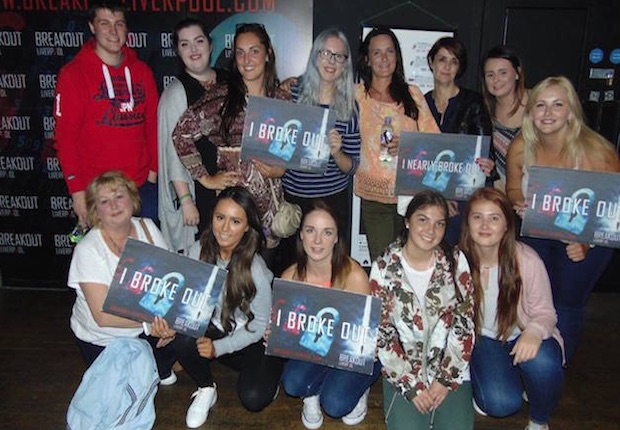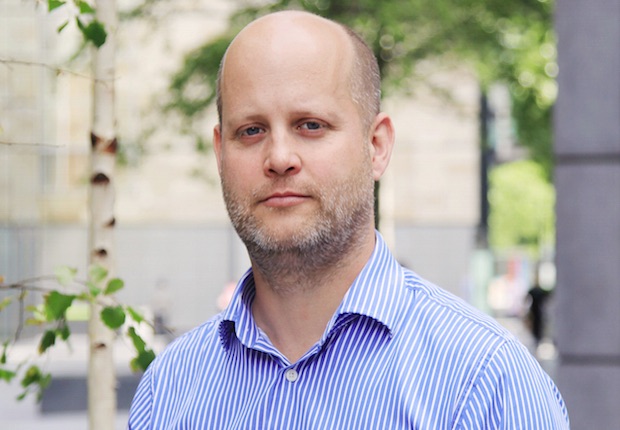
Need to know:
- A cultural change may be needed to shift employees’ focus from short-term goals to longer-term organisational objectives.
- Building a narrative around benefit strategies and illustrating how this ties into an organisation’s values can help engage staff with long-term business growth.
- Benefits that demonstrate employers have a long-term commitment to staff could help to drive a long-term mindset among employees.
According to a study published by Globoforce’s WorkHuman Research Institute and the IBM Smarter Workforce Institute in October 2016, The employee experience index: a new global measure of a human workplace and its impact, 44% of respondents do not feel that their senior leaders provide a clear direction about where the organisation is headed. If employees do not understand, or are not on board with the long-term aims of a business, then it begs the question as to how effectively organisations are going to achieve their goals.
So what can organisations do to engage employees with the goals and objectives necessary for long-term growth? And what function can benefits play in aligning employee and employer line of sight?
Build a narrative
In working environments where employees focus on near-term goals that appear to have a more tangible and direct impact on them, a cultural shift may be required to increase engagement with the longer-term and wider goals of the organisation. Tristram Hawthorn, consultant at JLT Employee Benefits, says: “Each individual’s own cultural outlook is impacted by the cultural norms of the business. If a business is always furiously chasing results for the next quarter, even if those aren’t part of an overlying strategy for, say, three- or five-year business growth, then individuals will align themselves with that outlook from the business.”
Top-down messaging can play a key role in reshaping a culture that engenders this approach. Jeff Fox, head of strategic benefit consultancy at Aon Employee Benefits, says: “If [organisations] want to drive a longer-term mindset then they have to lead from the top; it has to come from the senior executive team, they have to live those values and be seen to live them.”
Developing a narrative that employees can buy into can also encourage staff to look at the bigger picture. Yves Duhaldeborde, senior consultant at Willis Towers Watson, says: “The effort is on telling a story to employees about where the organisation is headed and trying to involve them. It’s very important to involve them and make them feel part of the story of what the organisation is building, and make connections about what the organisation represents in the community and society overall.”
By embedding their core values into their benefits strategy and building a corresponding narrative around this, organisations can further reinforce the overarching mission of the business. Hawthorn says: “[Organisations should consider] the key underlying reason of why they have these benefits in the first place: What are the aims and objectives of having them? How does that tie in to their wider corporate strategy and narrative?”
Of course, designing a benefits strategy that supports corporate values is less likely to drive long-term growth if it is not clearly understood. Steve Herbert, head of benefits strategy at Jelf Employee Benefits, says: “In terms of getting benefits embedded in the culture, and therefore helping engagement and productivity, the key is getting line managers to actually understand the high-level objectives of the benefits package.”
Incentivise the right behaviours
By incorporating behaviours that support business aims into the performance management process, and associated reward, organisations can incentivise employees to engage with the objectives required for long-term growth. Fox says: “The key is to synchronise the objectives of the employee with that of the employer, and that’s primarily through the tool of performance management. From that, incentivise those behaviours that the organisation needs to see in its employees to achieve those objectives, which could be around [rewards] such as bonuses.”
To be impactful, these objectives, and the employees’ role in achieving them, should be thoroughly communicated and the process of rewarding behaviours and outcomes should be clear and fair. Iain Thomson, director of incentive and recognition at Sodexo Benefits and Rewards Services, says: “Don’t be shy of having visibility around what the [organisation] is trying to achieve; reiterate it. Each time someone demonstrates a behaviour and they are rewarded for it, make sure to feed back to them around what [reward] they have got and why they have got it; it’s the ‘why’ that’s really important.”
To enhance understanding of a long-term strategy and to get employee buy-in for each phase of the journey, organisations could break their strategy down into smaller steps, says Thomson. “Have a three-year goal, but then have an annual target, and break that down into quarterly achievements so that there are bite-sized chunks that will help [an organisation] achieve its target and, ultimately, hit its three-year goal,” he explains.
The uncertainty caused by the Brexit vote may intensify communication challenges around an organisation’s long-term strategy, adds Fox. However, it also shines a spotlight on the need for high-performing, productive workforces that help ensure UK businesses are competitive. “We need to improve productivity, and there’s all sorts of factors around that but engagement is certainly part of it,” explains Herbert. “If [the UK] is going to thrive and grow post-Brexit then [it] needs to be in a position where employees are giving it their all.”
Offer support for the long haul
Benefits such as income protection, private medical insurance (PMI), and workplace pensions, can demonstrate an employer’s long-term commitment and investment in its staff, which could, in turn, prompt a sense of loyalty among employees and increased engagement with the success of the organisation. “Some of the traditional benefits, such as the ones that reward long-term service or that have an expectation that [the employer] is going to look after an employee from the time they join all the way up until the time they retire, are indicative of a culture of ‘we want to look after our staff’,” says Hawthorn.
All-employee share schemes can also highlight the link between business growth and employee benefits. “As shares increase in value, [employers] can tie that to the growth of the organisation,” says Aon’s Fox. “Participation in a share scheme benefits the [organisation] but it benefits the employee at the same time, and as they see the share price increasing it’s an obvious measure of the success of the [organisation].”
Benefits schemes that involve the employee signing up for products or services for an agreed period of time can also nudge employees towards a longer-term mind set, adds Fox. This might include car schemes, subsidised gym membership, or technology schemes that involve monthly repayments. “These can potentially help keep employees with the organisation for longer,” explains Fox. “It causes employees to think twice about whether they are going to leave because if they do leave they will have to pay an outstanding balance.”
Ultimately, providing benefits that are valued by employees and relevant to their lives is key. Herbert says: “Soft benefits, if used in conjunction with hard benefits, are equally important if not more so. For example, flexible working is such an important thing for so many people.”
Offering employees the flexibility to adapt their package according to their needs can also play a significant role in engaging staff. “Flexible benefits, where [employees] have a choice over what they receive and how they receive it, can be a lot more motivating and drive a longer-term outlook as well,” says Fox.
Open up lines of engagement
Setting up channels for employee feedback can help staff to feel more involved with development processes, both around benefits and an organisation’s mission and aims more broadly. Where an employer acts on, or responds to, feedback, this could, in turn, lead to greater engagement with long-term projects.
The use of online engagement tools, such as mobile apps, pulse and always-on surveys, can also allow for engagement and input from across all levels of a business. Ian McVey, head of enterprise sales, Northern Europe, at customer and employee insight software organisation Qualtrics, says: “Technology enables the communication flow, and that communication flow enables collaboration and innovation to happen. Because of the impact of social media, there’s also now much more of a cultural expectation to share opinion.”
The more instant route to employees that digital engagement tools can provide, could also help organisations to adapt and improve their business strategy as required. As McVey says: “Things move so quickly; be the disruptor to yourself and do that through your own employee engagement programme.”
 Fletchers Solicitors embeds core values in benefits strategy to engage staff with business goals
Fletchers Solicitors embeds core values in benefits strategy to engage staff with business goals
Over the last two years, Fletchers Solicitors has grown from 90 employees to more than 340. To support this growth and engage staff with the organisation’s values and goals, Fletchers has defined its core values and developed a reward and benefits strategy that embodies and celebrates these.
The law firm has incorporated its four core values, trust, innovation, performance, and development, into its recruitment and performance management process, as well as its reward and recognition initiative, the Love awards.
The Love awards, which stand for Live Our Values Every day, is a peer-nominated recognition scheme that rewards employees who have demonstrated actions and behaviours in line with the organisation’s values. Winners receive a Love2shop voucher and are announced by the organisation’s chief executive.
Sara Duxbury, head of people, says: “Even though we’ve gone from 90 staff to 342 in two years, our chief executive still does a monthly brief to all staff in person. He will announce our Love Awards winners, as well as deliver commercial updates.”
Fletchers also celebrates team effort and performance through team activities. These vary according to the team, ranging from group trips to the cinema, to team lunches, to breakout and escape room style-games. “It’s not just that they get a mention and an award, we always try to think of something that the team will enjoy,” says Duxbury.
The organisation also offers training and development opportunities for staff. Duxbury says: “Through things such as funded training, people are staying with us and investing in us because we’ve invested in them. It also leads to more people with more knowledge staying in the business, which adds up to meeting KPIs [key performance indicators], higher productivity, and so on.”
As it grows, the organisation continues to take steps to support the mental and physical wellbeing of its staff and to provide an environment that enables employees to maintain a good work-life balance. This includes the provision of benefits such as a health cash plan, flexi-time and early finishes, free fruit, and an employee assistance programme (EAP). Managers highlight benefits such as the EAP in one-to-one sessions, so that employees know that support is available and are aware of how they can access it.
In May 2016, Fletchers enhanced its health and wellbeing offering with the introduction of mental health training for managers, subsidised gym membership, and a communications approach designed to encourage staff to think about their health and wellbeing. In October 2016, the organisation also introduced free flu jabs for staff.
As a result of the organisation’s efforts, absence rates fell from a high of 3.5% in August 2015 to 1.24% in 2016. The firm has a retention rate of approximately 88% and was named in The Sunday Times’ 100 Best Companies to Work For list for the first time in 2016, with a 90% response rate among staff.
“We try to show who we are as an organisation through the benefits that we offer,” adds Duxbury.
 Viewpoint: Inspiring staff with a clear set of values can support strategic growth
Viewpoint: Inspiring staff with a clear set of values can support strategic growth
For any ambitious organisation with eyes on strategic growth, it is necessary that each employee is aware of, and buys into, the business values at the heart of the enterprise. This is especially pertinent in fast-paced and quickly evolving sectors such as media, where keeping employees up to speed with an organisation’s values is an ongoing challenge.
At Carat, we want to build a culture that encourages and supports our values. It is business-critical that we encourage our people to innovate, to ask the hard questions and to always push both themselves and our clients forward in the digital economy. After convening staff focus groups, we came up with an internal phrase to better express this. Our new mantra is ‘Make Brave Happen’.
For the past few months we have invited in guest speakers once a month to share their personal stories of bravery or going against the grain. But to really demonstrate how invested in this the organisation is, we organised a full week of programming featuring extraordinary and inspirational guest speakers.
The centrepiece of the week was an all-agency away day. The morning of the away day featured a talk from our group chief executive officer (CEO) and three guest speakers, including the co-founder of Walking With The Wounded, who led wounded servicemen and women (and HRH Prince Harry) on expeditions to both the North and South Poles; a motorcycle-racing, world champion and Paralympic alpine skier who took up the mono-ski after being paralysed from the shoulders down; and a former SAS officer who now consults on Channel 4’s ‘SAS: Who Dares Wins’.
A top client also came to the stage in a question-and-answer session with our CEO and spoke about how much he values bravery from his team, further giving the staff ‘permission’ to be brave. Later in the afternoon, the agency was divided into 26 teams and sent on a curiosity-fuelling, city-wide visual treasure hunt.
While the week itself was designed to inspire, the practical implications from the day will be reinforced over the coming months with further content from external speakers, access to mentoring and career development, buddying across the agency, and special recognition programmes to celebrate those going the extra mile. Our hope is that by creating the conditions for bravery and consistently inspiring our people around this theme, they will be encouraged overall to innovate and pioneer on behalf of our clients.
If an organisation wants to grow, it also needs its staff to grow alongside it. That means inspiring employees with a clear set of business values, no matter what sector you are in, to foster an environment that celebrates mutual success for the business and its employees.
Matt Landeman is managing director at Carat UK